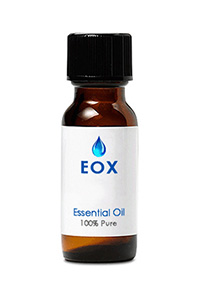New ArrivalsGift Ideas Specials Contact Us

WINTER 5% OFF SALE!
SITEWIDE05
Simply enter the above coupon code and save 5% on your ENTIRE ORDER!
Use PayPal, cash, or checks! NO LIMIT!

Now In: CATEGORIES → Essential Oils → 15ml Bottles → Essential Oil - Niaouli
Botanical name: Melaleuca quinquinervia Color: Clear to pale yellow-green Consistency: Thin Perfumery note: Middle Related planets/deities: Mercury Aroma: Earthy, camphoraceous Energetic Properties: Clarifying, uplifting Aromatherapy properties: A clear to pale yellow-green mobile liquid with a sweet, fresh, camphoraceous aroma. It blends well with slightly spicy or camphoraceous oils such as cedarwood, coriander, eucalyptus, fennel, juniper, lavender, lime, myrtle, pine, peppermint, and rosemary. Spiritual Uses: The clarifying aroma of niaouli oil is used to clear the mind, induce concentration, uplift mood, and inspire optimism about the future. Although niaouli oil is stimulating by itself, it can be blended with calming lavender and inhaled or applied before bed to relieve insomnia. Niaouli oil may be beneficial for clearing away emotional stress and helping one feel comfortable in one's own skin. Niaouli oil is also used in washes to purify magickal tools, and in exorcism rituals because of its ability to cleanse and refresh a space. Blends well with: Slightly spicy and refreshing oils of Cedarwood, Coriander, Eucalyptus, Fennel, Juniper, Lavender, Lime, Myrtle, Pine, Peppermint, and Rosemary. History: Niaouli is an evergreen tree that is related to the tea tree (Melaleuca alternifolia). It is native to Australia, New Caledonia, and Pacific islands nearby. In 1788, explorers on Captain Cook’s Pacific expedition gave niaouli its Latin name, Melaleuca quinquinervia. The niaouli tree’s narrow, needle-like leaves contain its antiseptic compounds, and have traditionally been placed in water sources such as streams and wells to purify them. Niaouli oil was also once used in French obstetric wards as an antiseptic and analgesic, and niaouli oil compounds are still a component of some toothpastes and mouthwashes. Niaouli trees have been transplanted to Florida to decorate streets and parks, and some have taken root in the Florida Everglades. |
|
|||||||
|
|||||||





